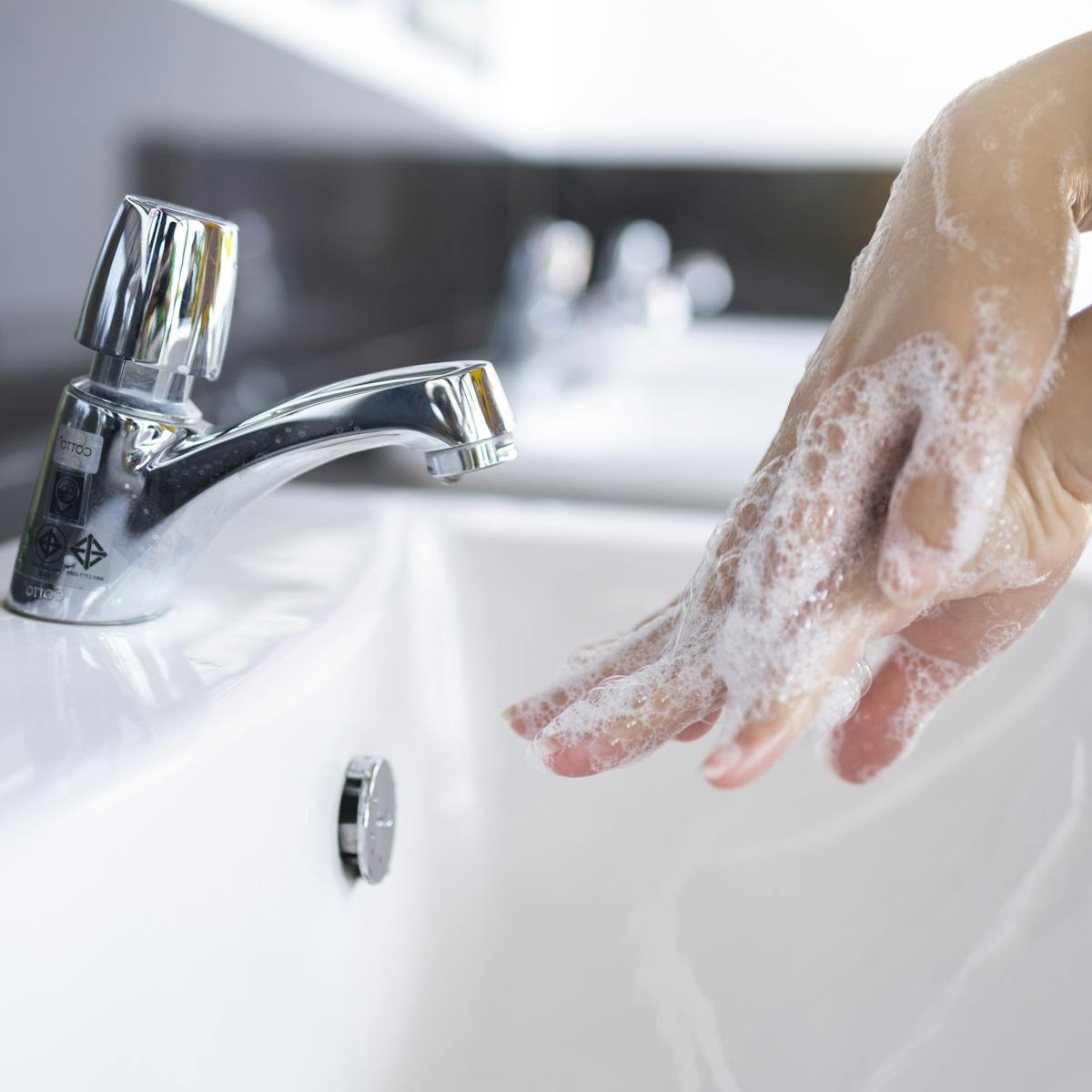These 5 Bathroom Habits Could Be Making You Sick
According to Charles Gerba, Ph.D., a microbiologist and professor at the University of Arizona who is sometimes called by his moniker, Dr. Germ, "the bathroom tends to get the most amount of attention when it comes to cleaning since it is typically seen as the germiest room in the home."
Yet he adds that having a clean sink and toilet is only one aspect of the situation. "Although surfaces in the bathroom receive the majority of attention, hand hygiene is more crucial than surface cleaning."
Here, Dr. Gerba shares some of the most common mistakes people make in the bathroom that up their risk of spreading germs—plus easy fixes to stay germ-free.
Bathroom Habits That are Bad for Your Health
You probably already know without being told that this is sort of gross; don't take your phone in the bathroom. But if you're guilty of this bathroom habit, you're in good company: Even Gabrielle Union admitted to Health that the so-relatable ritual of checking apps like Twitter and Words With Friends from the toilet is her "end-of-the-day treat."
"Still, you're better off keeping the bathroom a phone-free zone," says Dr. Gerba. "Germs, including fecal matter, are released into the air and can land on those surfaces, leading them to spread outside the bathroom."
No surprise here: Hand washing is "the most cost-effective and efficient way to prevent getting sick, and the gold standard to getting rid of germs on hands," Dr. Gerba tells us. Wash incorrectly, though; could bring bathroom germs with you when you walk out the door.
Need a quick refresher? Make sure you're washing your hands with plenty of warm, soapy water for at least 20 to 30 seconds, long enough to sing "Happy Birthday" twice. And don't forget to scrub under your nails, an area that can harbor germs.
3. Using Bar Soap
Bar soap may be making a comeback in the beauty world, but when it comes to simple hand washing, stick to liquid formulas that come out of a dispenser.
The reason is: Bars of soap "collect bacteria when used by multiple people," explains Dr. Gerba. "While the soap tray is often cleaned, the soap itself becomes a breeding ground for germs that are easy to pick up and spread." In other words, every time you pick up that sudsy bar, you're enabling more germs to come into contact with your hands instead of expelling them. Gross.
4. Skipping Hand Sanitizer
"Although it's no substitute for hand washing, a few spritzes of a hand sanitizer can go a long way in and out of the bathroom," says Dr. Gerba. He recommends one that provides up to 24 hours of residual protection with just one application.
5. Sharing One Hand Towel for the Whole Family
"Those disposable paper towels in public bathrooms are actually better at controlling the spread of germs than fabric ones you keep in your bathroom at home," says Dr. Gerba. Yet, putting a paper towel dispenser in most homes isn't exactly practical (not to mention, that it would be pretty terrible for the environment). Instead, make an effort to pay attention to how frequently you replace your hand and face towels. They should be washed at least once a week, more frequently if there are young children living in the home.
Also, while there isn't much you can do about a public restroom that only has air dryers, be aware that those aren't exactly the cleanest either: Even on just-clean hands (no! ), according to a University of Connecticut study that was published in Applied and Environmental Microbiology earlier this month. Another justification to always keep hand sanitizer in your purse.

:max_bytes(150000):strip_icc()/fb-phone-bathroom-0b5a16516f094c02a72ba337860ab308.jpg)










.jpg)